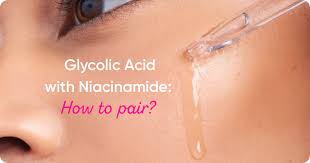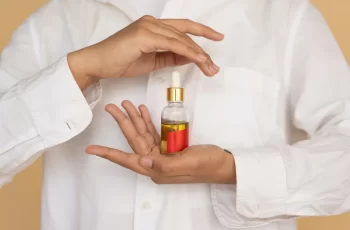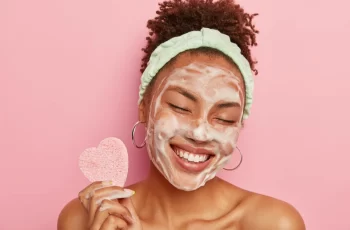
Can You Use Niacinamide After a Glycolic Toner?
The trouble with skincare, is the fact that everyone’s skin type is different. Teaming that with an extensive number of different products and ingredients available, it can feel like an endless battle at times. Especially when you find yourself still trying to navigate your way around and figuring which ingredients can be layered, and which should be avoided.
So, with that in mind, let’s investigate further into whether you can use niacinamide after a glycolic toner. Before we dive in, here is a brief recap of what glycolic acid and niacinamide do for the skin.
What are the benefits of glycolic acid?
Derived from sugarcane and artificially created to be formulated into skincare products.
One of the most used acids from the family of chemical exfoliants called alpha hydroxy acids (AHA)
Works at exfoliating the outer surface of the skin from the build-up of dead skin cells
Effective ingredient for combating breakouts, such as blackheads, spots, and flare-up in acne
Brings a dull and lack lustre complexion back to life by sloughing away dead skin cells, bacteria, dirt, and other impurities.
Fine lines and wrinkles are noticeably reduced, and the overall complexion is improved
The skin becomes more absorbent ensuring other formulations penetrate further
You can find out more about the skin benefits of glycolic acid, over on The Beauty Insiders.
What are the benefits of niacinamide?
A form of vitamin B3, niacinamide is not only found in skincare formulas, but in supplements too
Contains humectant traits enabling the ingredient to draw moisture into the skin surface and locking it into place
Can regulate the sebum secretion making it a highly beneficial ingredient for those with oily and blemish-prone skin types
Helps to balance the skin barrier ensuring there is enough oil and water to combat the exposure to free radicals, such as pollution, UV rays, and other environmental aggressors
Helps to reduce the overproduction of melanin in the skin causing signs of dark spots and hyperpigmentation to be improved
Wanting to know more about niacinamide and what it can do for your skin? Check out our dedicated blog post.
Does glycolic acid go before niacinamide?
Yes and no, by this I mean it’s very much dependant on the formulation of the product containing these actives. As a general skin rule, when applying your skincare routine, you start with the thinnest and work your way up to the thickest.
What you may find is both niacinamide and glycolic acid are formulated into an array of skincare products. Having said that, many suggest using glycolic acid before niacinamide. This is because the AHA will exfoliate the skin, removing the barrier of dead skin cells from the surface. This will result in other products being absorbed fully and effectively into the skin.
One thing to bear in mind is to ensure you leave enough time in between applications to allow the pH levels of the skin to rebalance. This will not only avoid unwanted skin reactions but will also result in both active ingredients delivering optimal results. If you find yourself to mix these ingredients together, you may end up with negative skin reactions, such as redness, rashes, itchiness, discomfort, and flaky areas of skin.
What can I use after glycolic acid toner?
Once you have applied a glycolic acid toner, the best product to follow this with is a serum that enriched in with a hydrating ingredient, such as hyaluronic acid. As effective as glycolic acid is at exfoliating the skin, it can sometimes cause some mild irritation, no matter how much your skin has built a tolerance. To counteract this team, it with a formula packed with nourishing and water loving powerhouses to strengthen the skin barrier. This will keep your complexion glowing, but also protected, especially when you finish your morning skincare routine with a daily SPF of 30 and above.
What should you not use with glycolic acid toner?
You can use any type of ingredient with glycolic acid if you are layering your products the correct way. Simply ensure you’re leaving about 20 to 30 minutes to allow the pH levels of the skin to rebalance, or alternatively you can alternate the days you use your glycolic acid products with other ingredients, such as salicylic acid, vitamin C, niacinamide, and even retinol. If you are wanting to know more about, what can you not mix with glycolic acid, you can read more on our blog.
Is niacinamide or glycolic acid better?
Both ingredients deliver different benefits for the skin, so to determine which is better will have to consider what your skincare goals are. If you find your complexion is looking dull and lack lustre, you are prone to frequent breakouts, or you are showing signs of premature ageing such as fine lines and wrinkles. Well, in all honesty this can result in you using both ingredients. The easiest step to consider is your skin type and how sensitive it can be, performing a patch test on the skin before applying the product all over the skin will help you establish which ingredient is best suited for you and your skin.
How do you use niacinamide with glycolic acid?
This is dependent on your skincare routine and the products you use. The main point to remember is to avoid layering these ingredients on top of each other as this will lead to a flare-up in skin irritation and reactions. As I have already mentioned, ensure you leave enough time between applications to avoid any unwanted side effects.
There you have it, some more details about whether you can use niacinamide after a glycolic acid toner. Remember, if you have any concerns with introducing a new product or formula to the skin, consult with your doctor or dermatologist to find the best formulation for you. Don’t forget if you have any more skincare questions, come, and follow the Procoal Instagram. You’ll find me or one of the skincare experts in the direct messages, looking forward to seeing you there!


